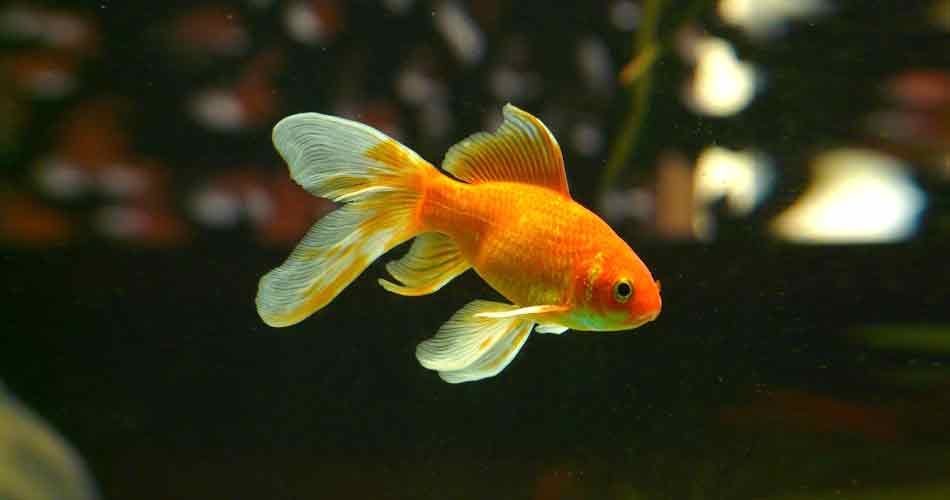Best 15 freshwater aquarium fish and 4 Avoid for beginners.
I am an experienced aquarium fish keeper my main hobby is freshwater fish but I also keep saltwater fish and turtles. By keeping the best freshwater aquarium fish, I have gained the knowledge and skills necessary to ensure their proper behavior, feeding habits, and well-being.
From my experience, freshwater fish are generally easier to keep than marine fish and are relatively easy to care for.
Below is a description of some of the freshwater fish kept in my aquarium, specifically for beginners, so that they can easily choose fish according to their preferences.
Best 15 freshwater aquarium fish
1. Betta Fish:
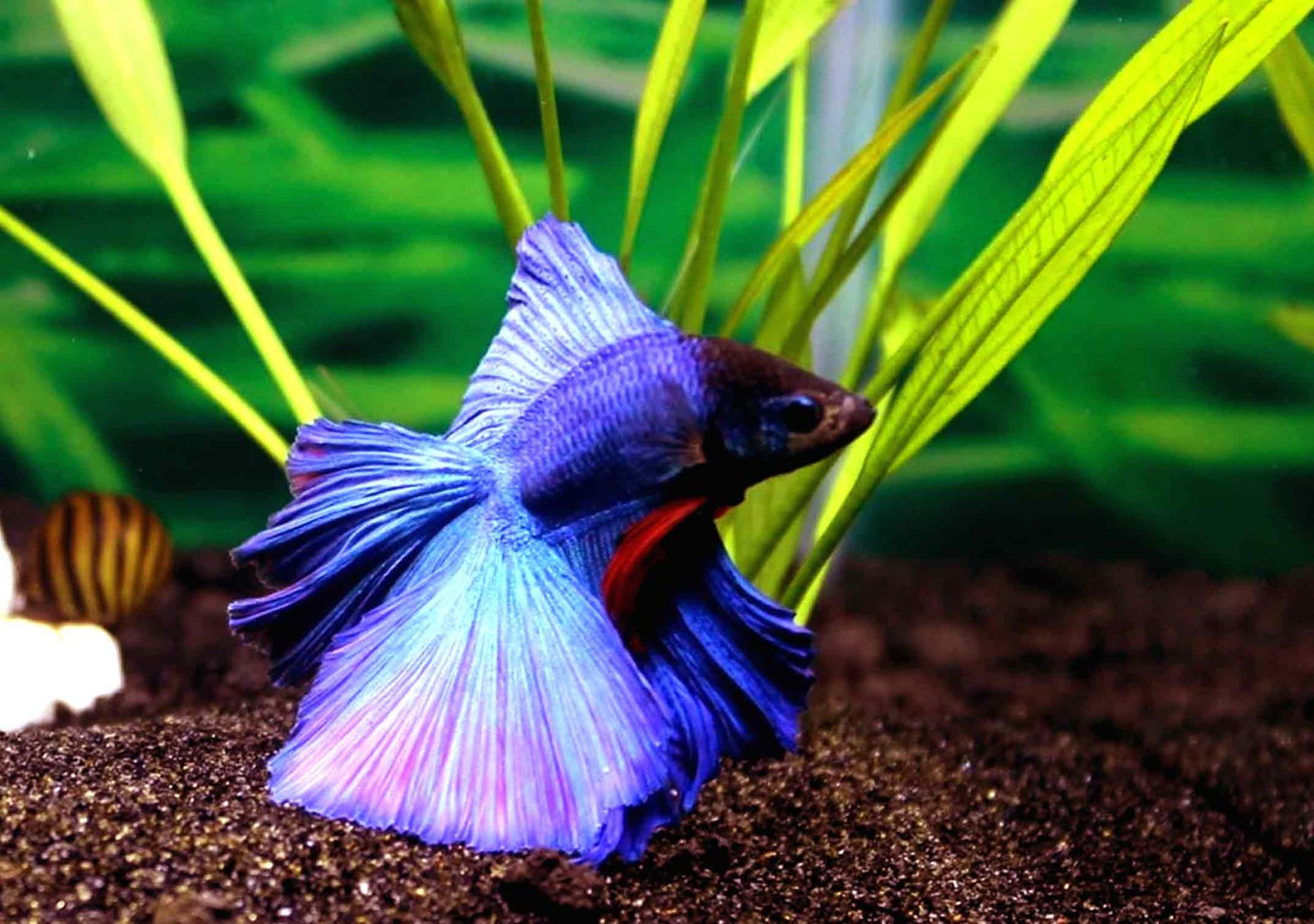
- Scientific Name: Betta splendens
- Common Name: Siamese fighting fish
- Color Form: Red, orange, yellow, green, blue, steel, black, and white
- Care Level: Easy
- Behavior: Aggressive
- Swimming Level: All levels
- Optimal pH: 6.5 – 8
- Water Hardness: Up to 20 dGH
- Breeding: Egg layer
- Origin: Cambodia, Thailand
- Adult Size: 2.5 – 3 inches
- Minimum Tank Size: 5 gallons
- Water Temperature: 76 – 82°F
- Diet: Live foods, pellets, flakes, and frozen foods
- Average Lifespan: 3 to 5 years
2. Angelfish:
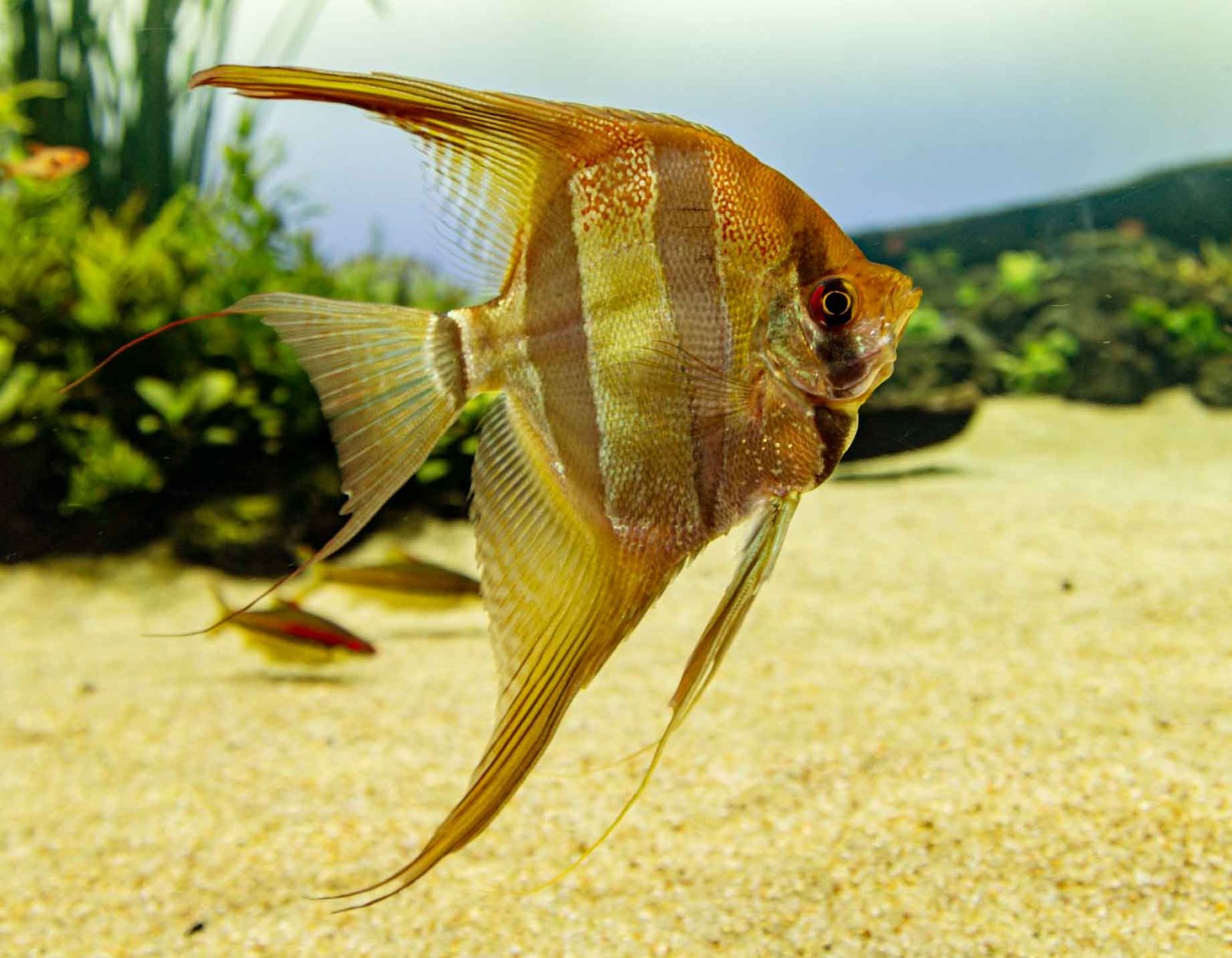
- Scientific Name: Pterophyllum
- Common Name: Angelfish
- Color Form: Black, silver, or gold
- Care Level: Easy
- Behavior: Aggressive
- Swimming Level: All levels
- Optimal pH: 6.8 – 7
- Water Hardness: 4 – 12 dGH
- Breeding: Egg layer
- Origin: South America
- Adult Size: 2.5 – 4 inches
- Minimum Tank Size: 20 gallons
- Water Temperature: 75 – 82°F
- Diet: Omnivore
- Average Lifespan: 10 – 12 years
3. Guppy Fish:
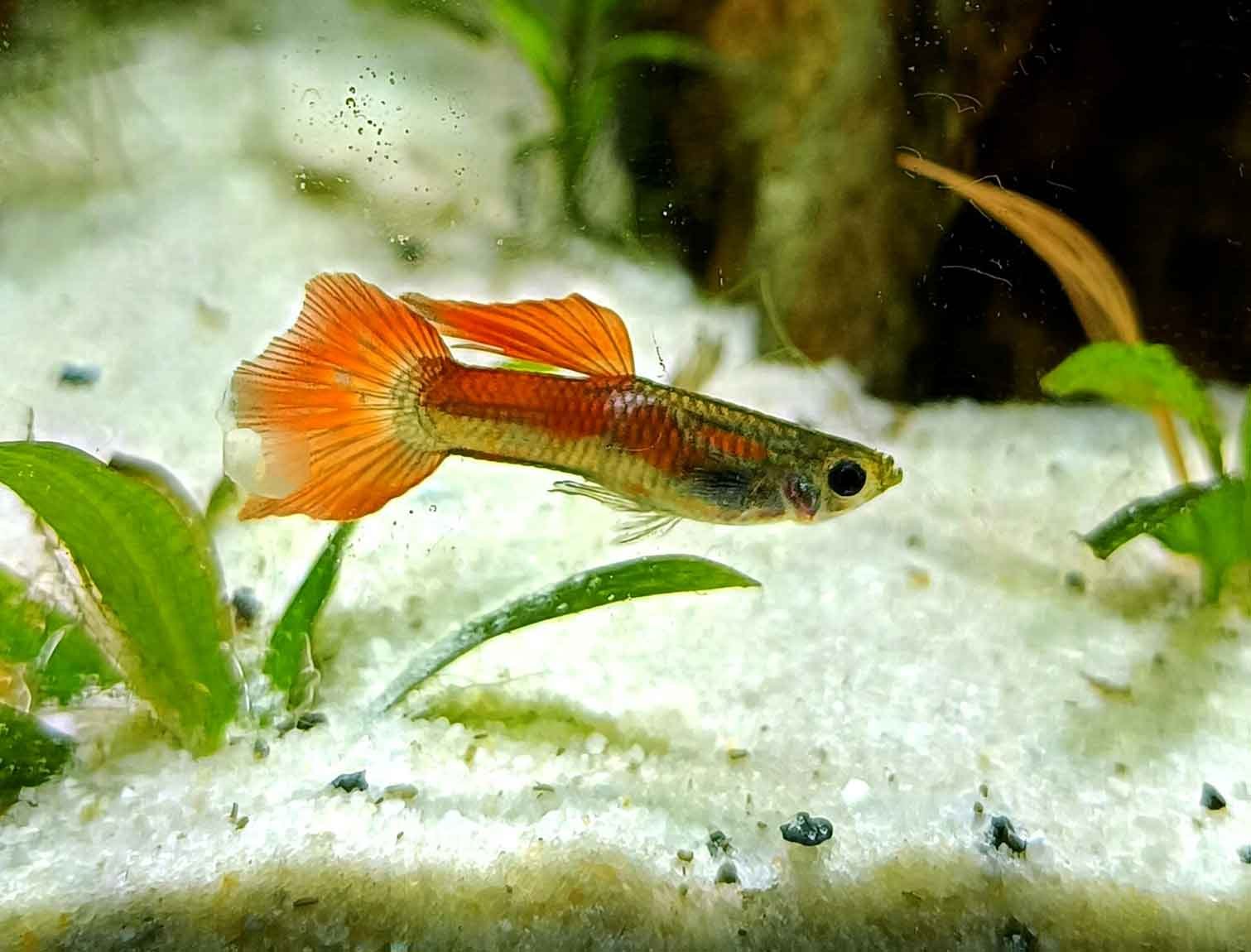
- Scientific Name: Poecilia reticulata
- Common Name: Guppy
- Color Form: Black, yellow, orange, pink, red, yellow, and blue
- Care Level: Easy
- Behavior: Peaceful
- Swimming Level: All levels
- Optimal pH: 7 – 8
- Water Hardness: 8 – 12 dGH
- Breeding: Live-bearer
- Origin: Native to South America
- Adult Size: 1.5 – 2.5 inches
- Minimum Tank Size: 10 gallons
- Water Temperature: 72 – 82°F
- Diet: Omnivore
- Average Lifespan: Up to 2 years
4. Dalmatian Molly:
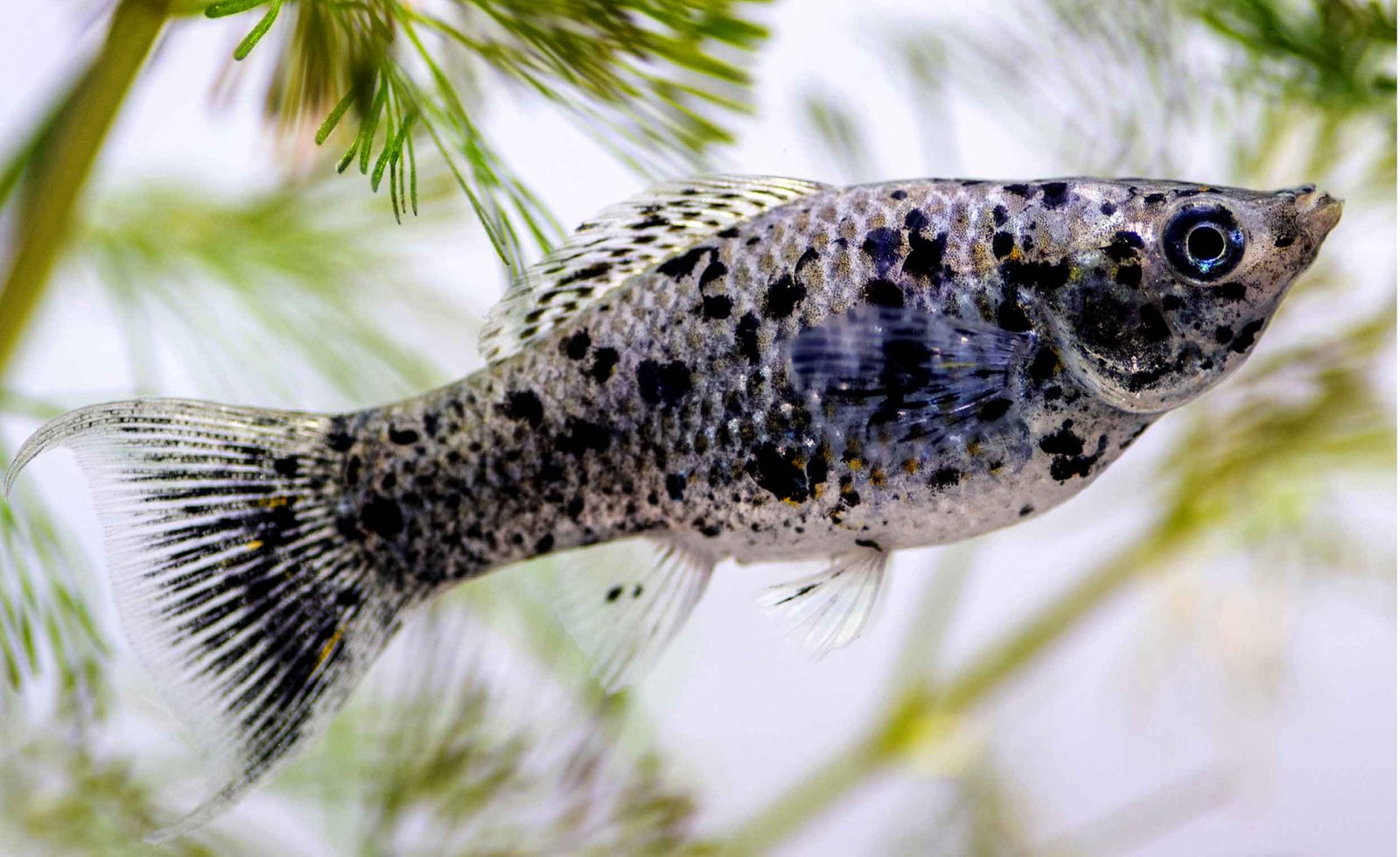
- Scientific Name: Poecilia sphenops
- Common Name: Dalmatian Molly
- Family: Poeciliidae
- Care Level: Easy
- Behavior: Peaceful – semi-aggressive
- Swimming Level: Middle
- Optimal pH: 7 – 8.5
- Water Hardness: 15 – 30 dGH
- Breeding: Live-bearer
- Origin: North & South America
- Adult Size: 3 – 5 inches
- Minimum Tank Size: 30 gallons
- Water Temperature: 70 – 82°F
- Diet: Omnivore
- Average Lifespan: Up to 5 years
5. Fantail Goldfish:
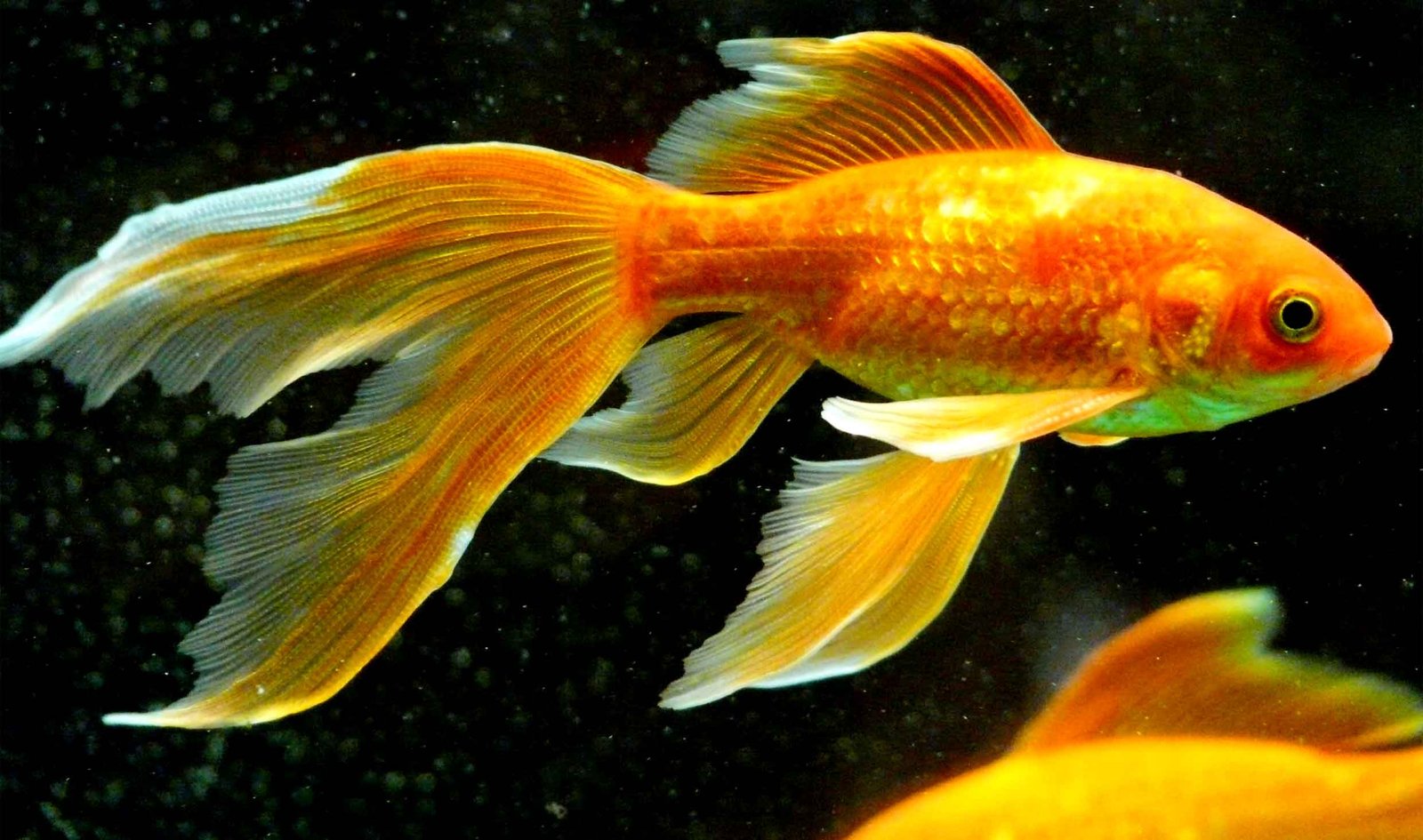
- Scientific Name: Carassius auratus
- Common Name: Fantail goldfish, double-tail goldfish
- Color Form: Orange, red, silver, blue, gold, black, and calico
- Care Level: Easy
- Behavior: Peaceful
- Swimming Level: All levels
- Optimal pH: 6.0 to 9.0
- Water Hardness: 6 to 12 dGH
- Breeding: Egg layer
- Origin: Asia
- Adult Size: 6 – 10 inches
- Minimum Tank Size: 20 gallons
- Water Temperature: 55 to 80°F
- Diet: Omnivore
- Average Lifespan: 10 to 15 years
6. Crystal Red (Bee) Shrimp:

- Scientific Name: Caridina cantonensis
- Common Name: Crystal Red (Bee) Shrimp
- Color Form: White, red
- Care Level: Easy – Intermediate
- Behavior: Peaceful
- Swimming Level: Bottom
- Optimal pH: 6.5 – 7.4
- Nitrate: Less than 20 ppm
- Breeding: Egg layer
- Origin: Asia
- Adult Size: 1 – 2 inches
- Minimum Tank Size: 6– 12 gallons
- Water Temperature: 66 – 76°F
- Diet: Algae eater/omnivore
- Average Lifespan: 1.5 – 2 years
7. Green Spotted Puffer Fish:
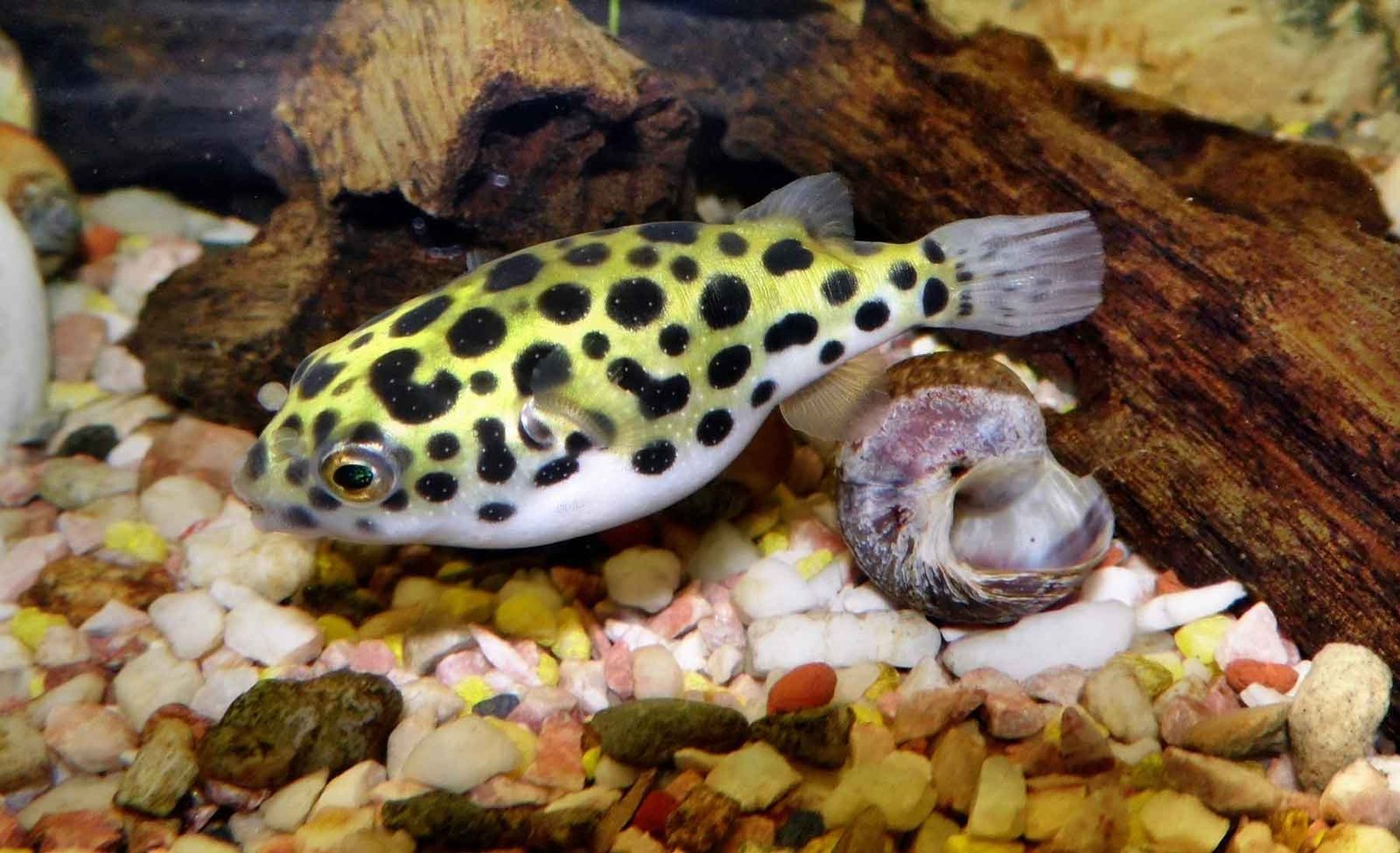
- Scientific Name: Tetraodon nigroviridis
- Common Name: Green Spotted Puffer
- Color Form: Green and yellow
- Care Level: Difficult
- Behavior: Semi-aggressive
- Swimming Level: Top
- Optimal pH: 7.5 – 8.5
- Family: Tetraodontidae
- Breeding: Egg layer
- Origin: South & Southeast Asia
- Adult Size: 6 inches
- Minimum Tank Size: 30 gallons
- Water Temperature: 75 – 82°F
- Diet: Omnivorous, predator
- Average Lifespan: 10 – 15 years
8. Kuhli Loach:
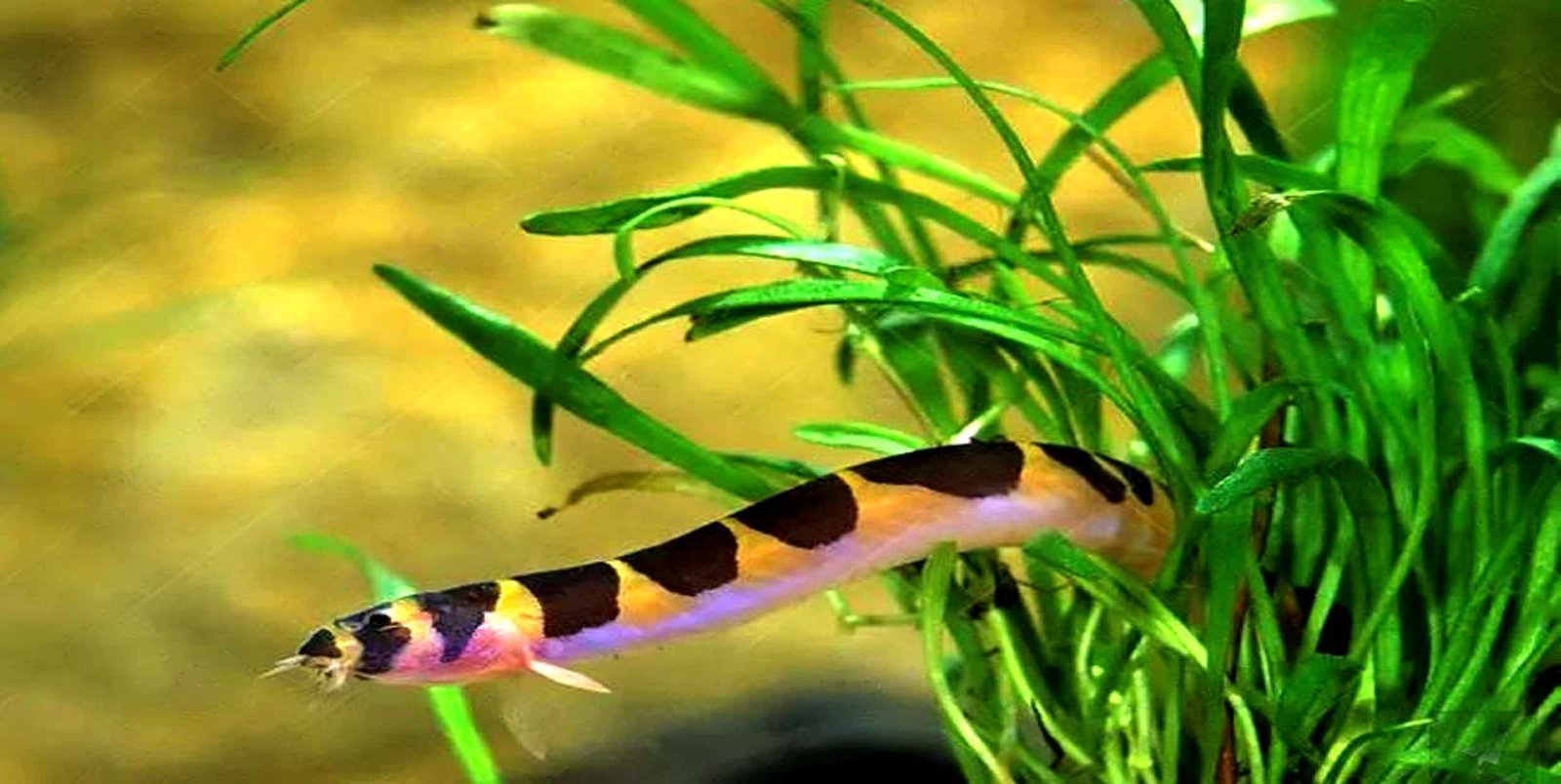
- Scientific Name: Pangio kuhlii
- Common Name: Kuhli Loach, Leopard Loach
- Color Form: Black, white, yellow
- Care Level: Easy – Intermediate
- Behavior: Peaceful
- Swimming Level: Bottom
- Optimal pH: 5.5 – 6.5
- Family: Cobitidae
- Breeding: Egg layer
- Origin: Southeast Asia (Indonesia and Malaysia)
- Adult Size: 4 – 8 inches
- Minimum Tank Size: 15 gallons
- Water Temperature: 73 – 86°F
- Diet: Omnivore and protein-based foods
- Average Lifespan: 10 – 12 years
9. Hatchet fish:
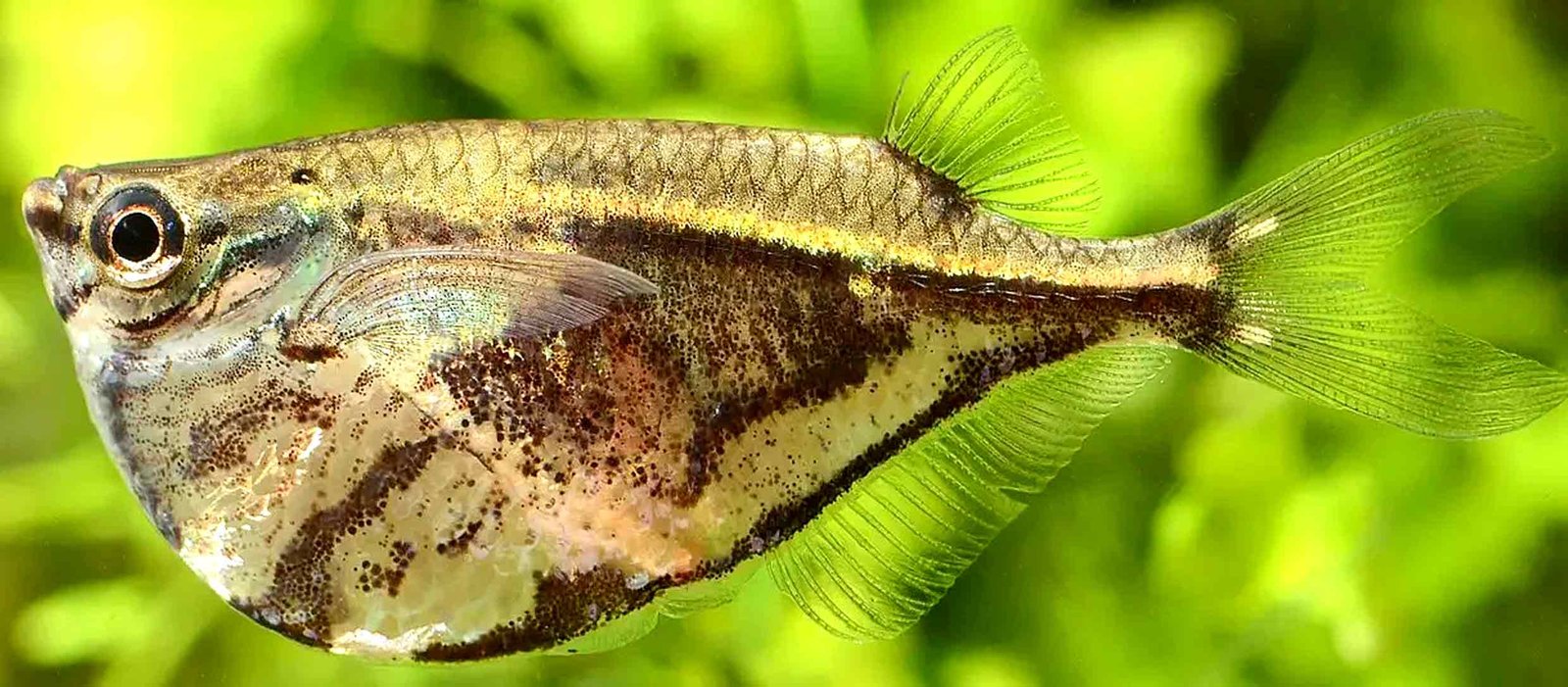
- Scientific Name: Carnegiella, Gasteropelecus, etc.
- Common Name: River Hatchetfish
- Family: Gasteropelecidae
- Care Level: Intermediate
- Behavior: Peaceful
- Swimming Level: Top
- Optimal pH: 6 – 7
- Breeding: Egg layer
- Origin: Central & South America
- Adult Size: 1.5 – 2.5 inches
- Minimum Tank Size: 20 gallons
- Water Temperature: 75 – 80°F
- Diet: Omnivore
- Average Lifespan: Up to 5 years
10. Kribensis Dwarf Cichlids:
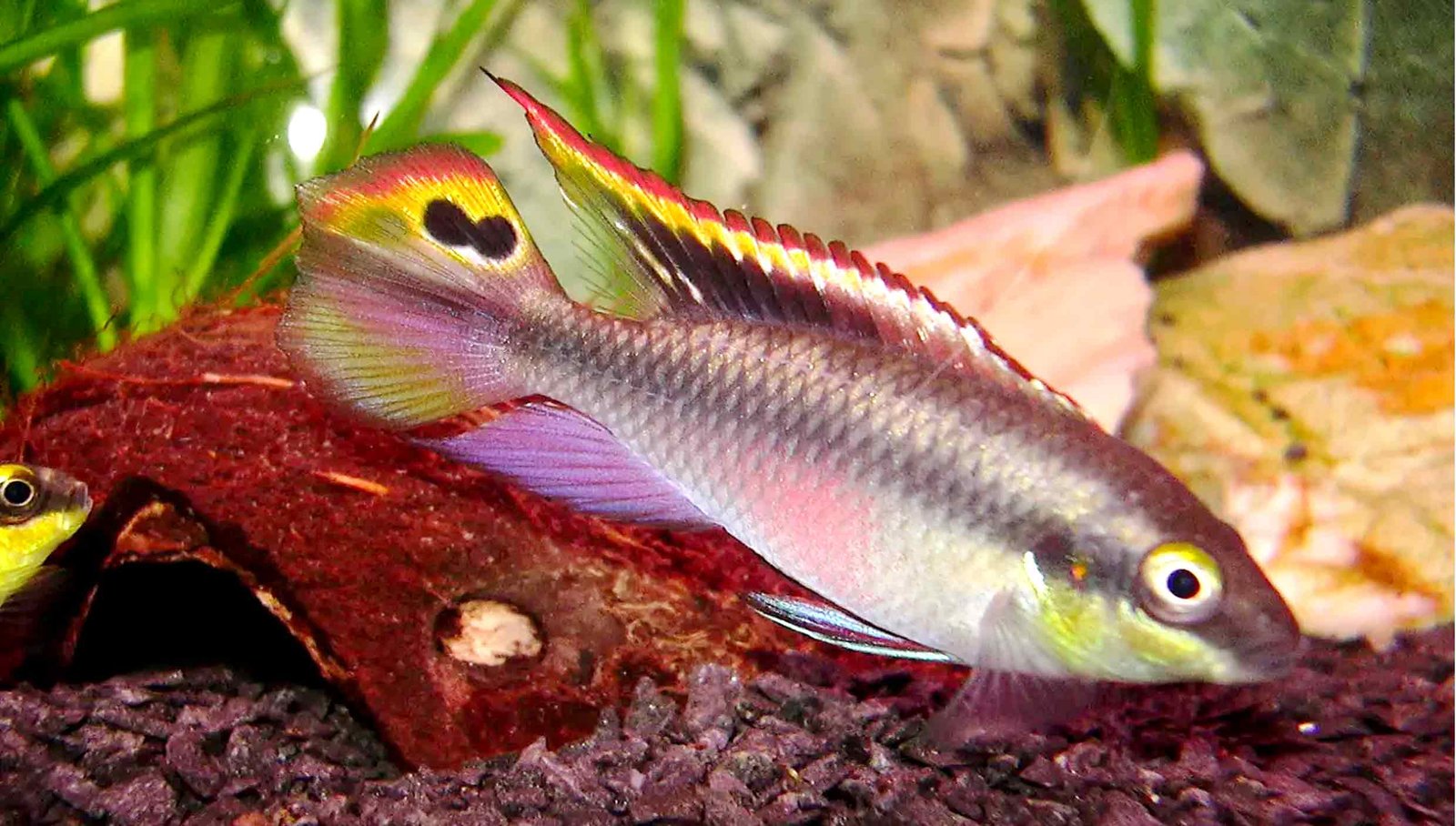
- Scientific Name: Pelvicachromis pulcher
- Common Name: Kribensis cichlid, rainbow krib
- Family: Cichlidae
- Care Level: Easy
- Behavior: Peaceful
- Swimming Level: Bottom
- Optimal pH: 6.5 – 7.0
- Water Hardness: 8 to 12 dGH
- Breeding: Egg layer
- Origin: West Africa
- Adult Size: 4 inches
- Minimum Tank Size: 12 – 16 gallons
- Water Temperature: 75 to 84°F
- Diet: Omnivore, eats most foods
- Average Lifespan: 5 to 8 years
11. Habrosus Cory Catfish: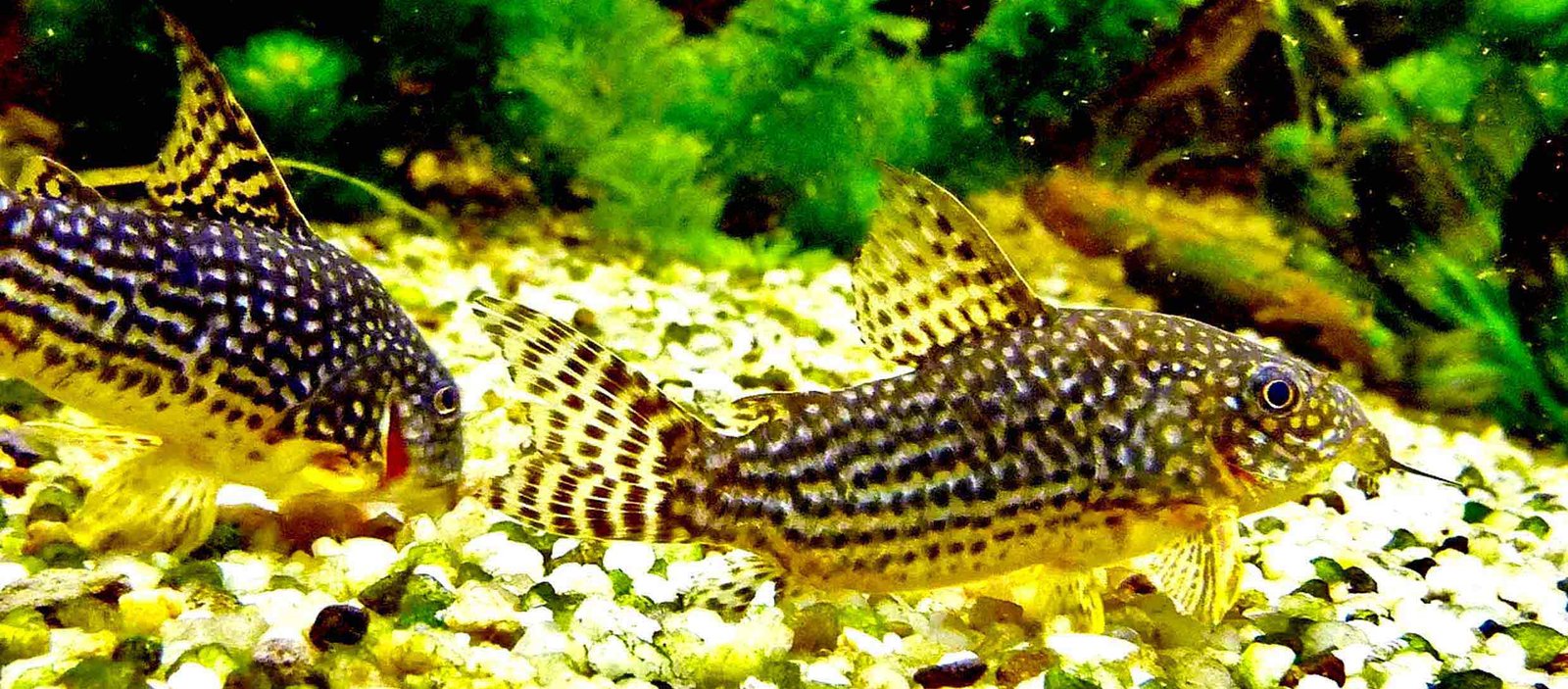
- Scientific Name: Corydoras habrosus
- Common Name: Dainty Cory, salt and pepper Cory
- Family: Callichthyidae
- Care Level: Easy
- Behavior: Peaceful
- Swimming Level: Bottom
- Optimal pH: 5.5 – 7.5
- Breeding: Egg layer
- Origin: Venezuela & Colombia
- Adult Size: 1.5 inches
- Minimum Tank Size: 15 – 20 gallons
- Water Temperature: 70 – 79°F
- Diet: Live, dried foods and Feed frozen
- Average Lifespan: Up to 5 years
12. Gardneri:
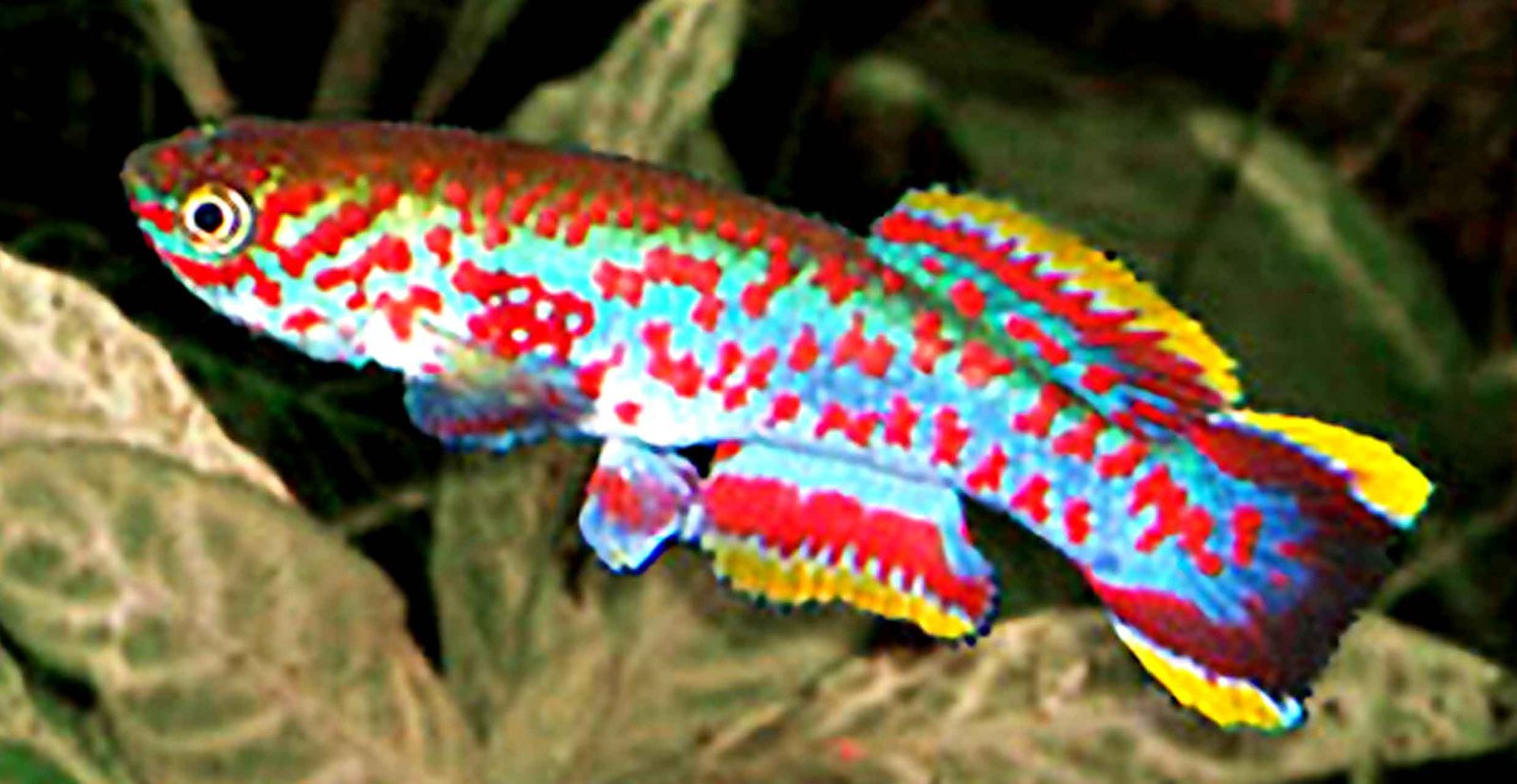
- Scientific Name: Aplocheilus, Jordanella, Fundulopanchax, etc.
- Common Name: Agaricus gardneri
- Color Form: Green, yellow, blue, and red
- Care Level: Easy – Advanced
- Behavior: Peaceful – Aggressive
- Swimming Level: All levels
- Optimal pH: 6 – 7
- Breeding: Egg layer
- Origin: Africa, Asia, America
- Adult Size: 1.5 – 5.5 inches
- Minimum Tank Size: 5 – 20 gallons
- Water Temperature: 68 – 75°F
- Diet: Flakes, granules, and frozen foods
- Average Lifespan: Up to 5 years
13. Gold Wagtail Platy:
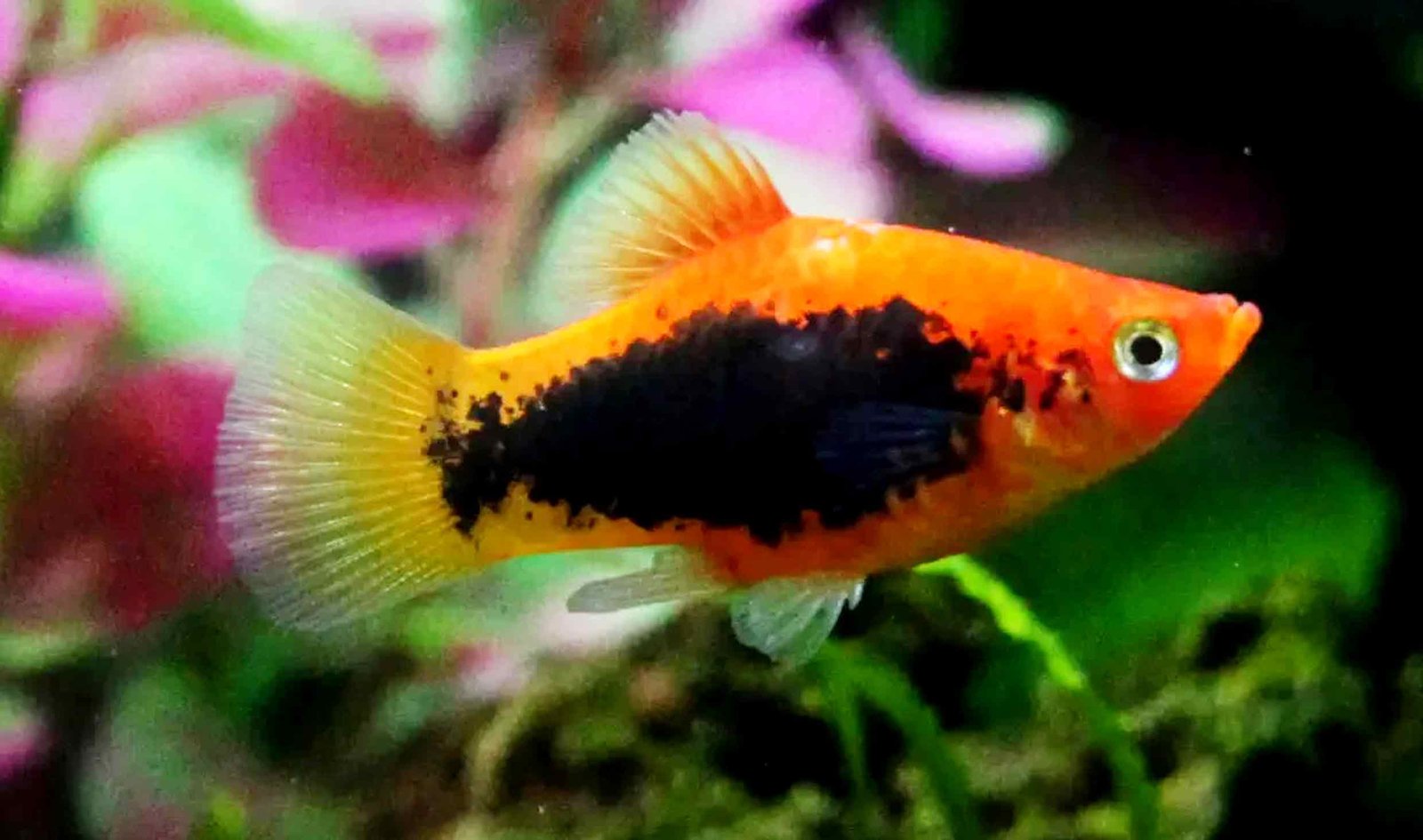
- Scientific Name: Xiphophorus maculatus
- Common Name: Gold wagtail platy
- Family: Poeciliidae
- Care Level: Easy
- Behavior: Peaceful
- Swimming Level: All levels
- Optimal pH: 7.0 to 8.0
- Water Hardness: 10 to 28 dGH
- Breeding: Livebearer
- Origin: Guatemala, Honduras, Mexico
- Adult Size: 2 – 3 inches
- Minimum Tank Size: 15 gallons
- Water Temperature: 64 to 78°F
- Diet: Omnivore, eats most foods
- Average Lifespan: 3 to 4 years
14. Zebra Danio:
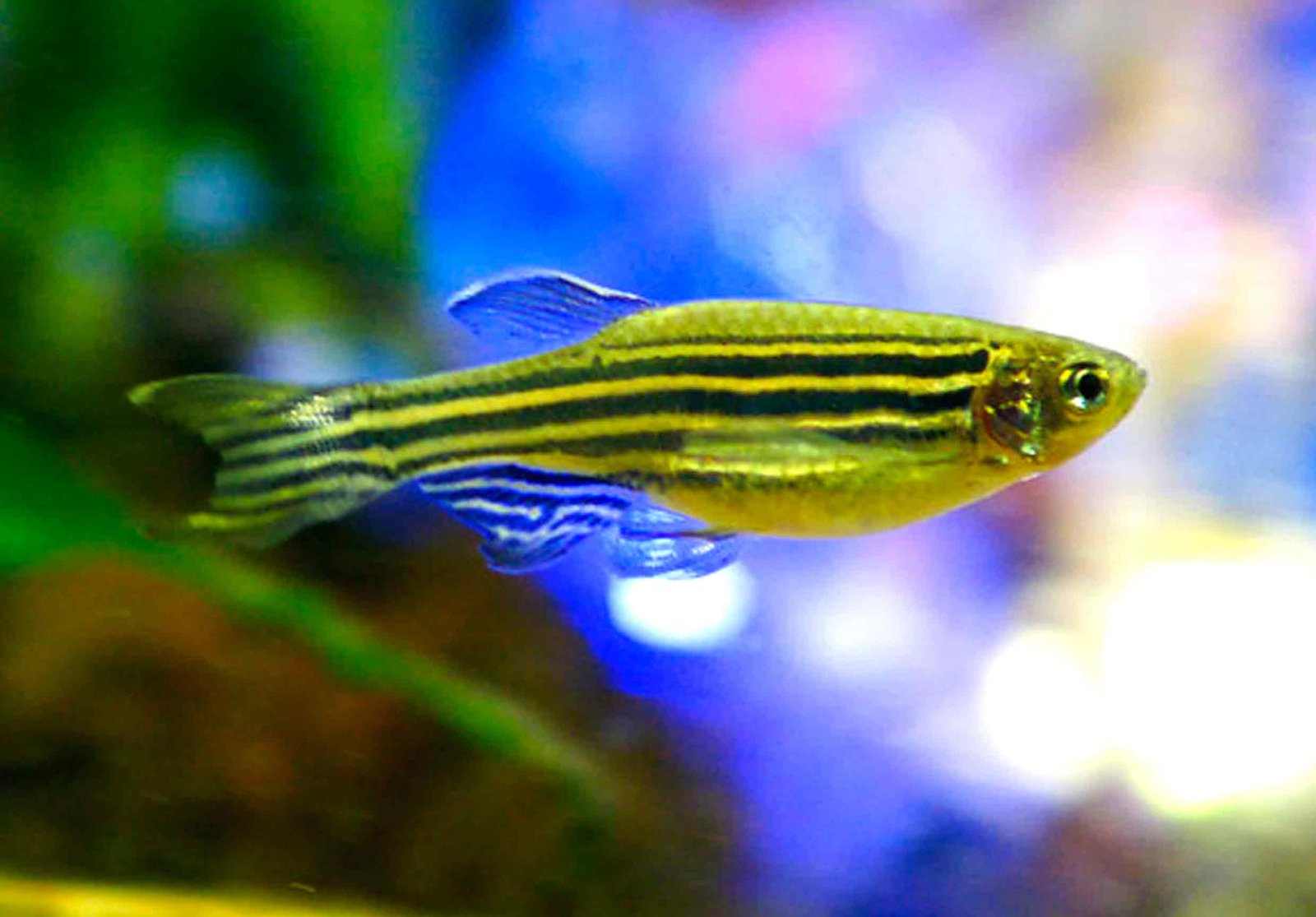
- Scientific Name: Danio rerio
- Common Name: Zebra danio, Striped danio, Zebrafish
- Color Form: Blue-purple
- Care Level: Easy
- Behavior: Peaceful
- Swimming Level: All levels
- Optimal pH: 6 to 7.0
- Water Hardness: 5 to 12 dGH
- Breeding: Egg layer
- Origin: Eastern India
- Adult Size: 2 inches
- Minimum Tank Size: 10 gallons
- Water Temperature: 63 to 75°F
- Diet: Omnivore
- Average Lifespan: 3 to 5 years
15. Dwarf Gourami:
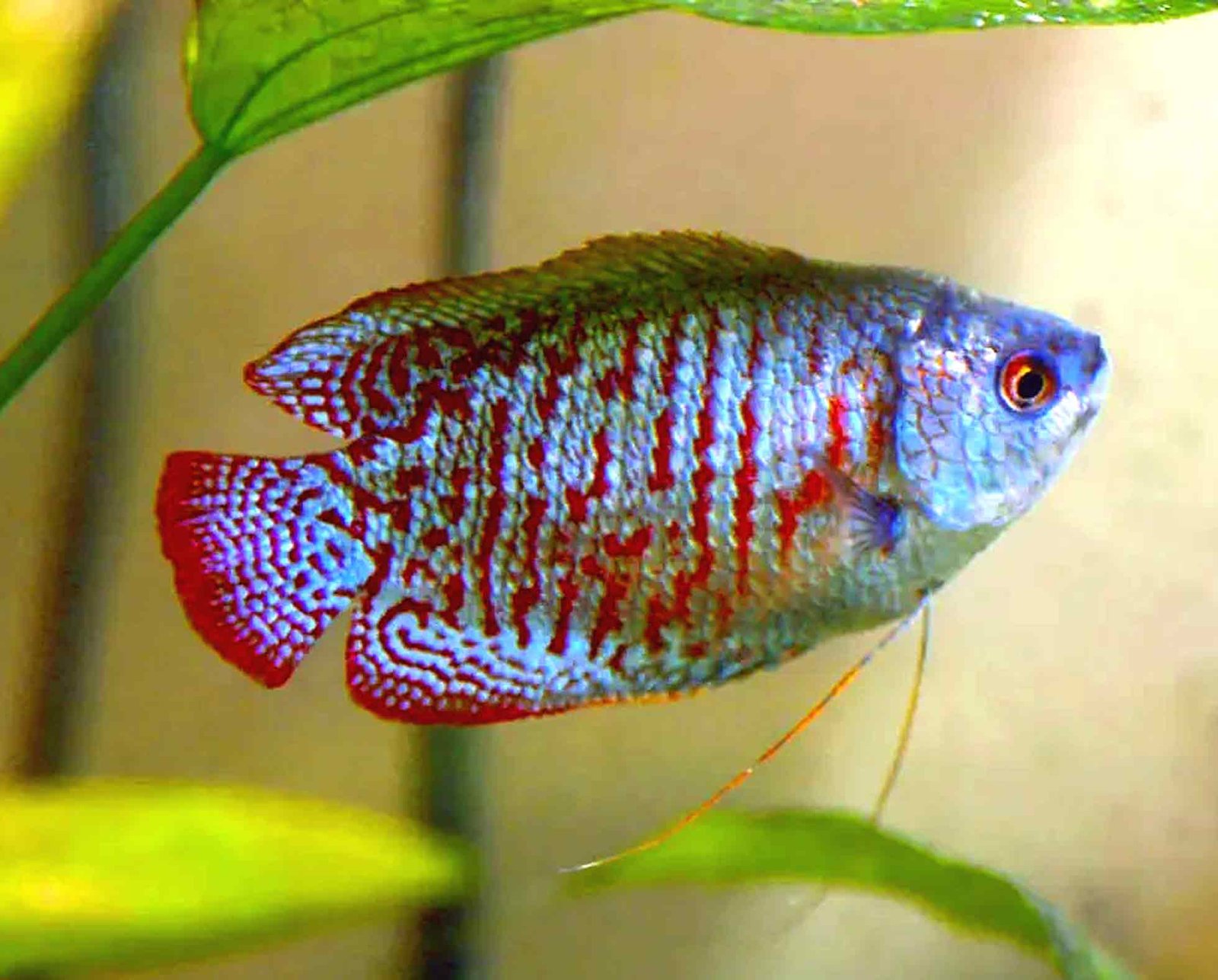
- Scientific Name: Trichogaster lalius
- Common Name: Dwarf gourami, gourami, red gourami
- Color Form: Blue coral, blue rainbow, blood red, metallic blue
- Care Level: Easy
- Behavior: Peaceful
- Swimming Level: All levels
- Optimal pH: 6.0 to 7.5
- Water Hardness: 4 to 10 dGH
- Breeding: Egg layer
- Origin: India, West Bengal, Assam, and Bangladesh
- Adult Size: 2 inches
- Minimum Tank Size: 5 gallons
- Water Temperature: 72 to 82°F
- Diet: Omnivore
- Average Lifespan: 4 – 6 years
4 Fish New Aquarists Should Avoid
1. Arowana

Arowana
Requires a large tank
Arowanas grow quickly and can reach about 2-4 feet in size. They require a large tank (usually 200-300 gallons or more).
It is difficult for beginners to set up and maintain such a large tank.
Sensitive to water quality
Arowanas are very sensitive to water quality. It is important to control the pH, temperature, ammonia, nitrite, and nitrate levels in the water.
It can be difficult for beginners to regularly monitor and control water parameters.
Special care required
Arowanas require regular tank cleaning, water quality testing, and maintaining the right environment.
This level of care is difficult for beginners if they are inexperienced.
Aggressive behavior
Arowanas can be aggressive and do not get along with other fish. They are usually kept singly.
This type of behavior is difficult for beginners to manage.
2. Discus
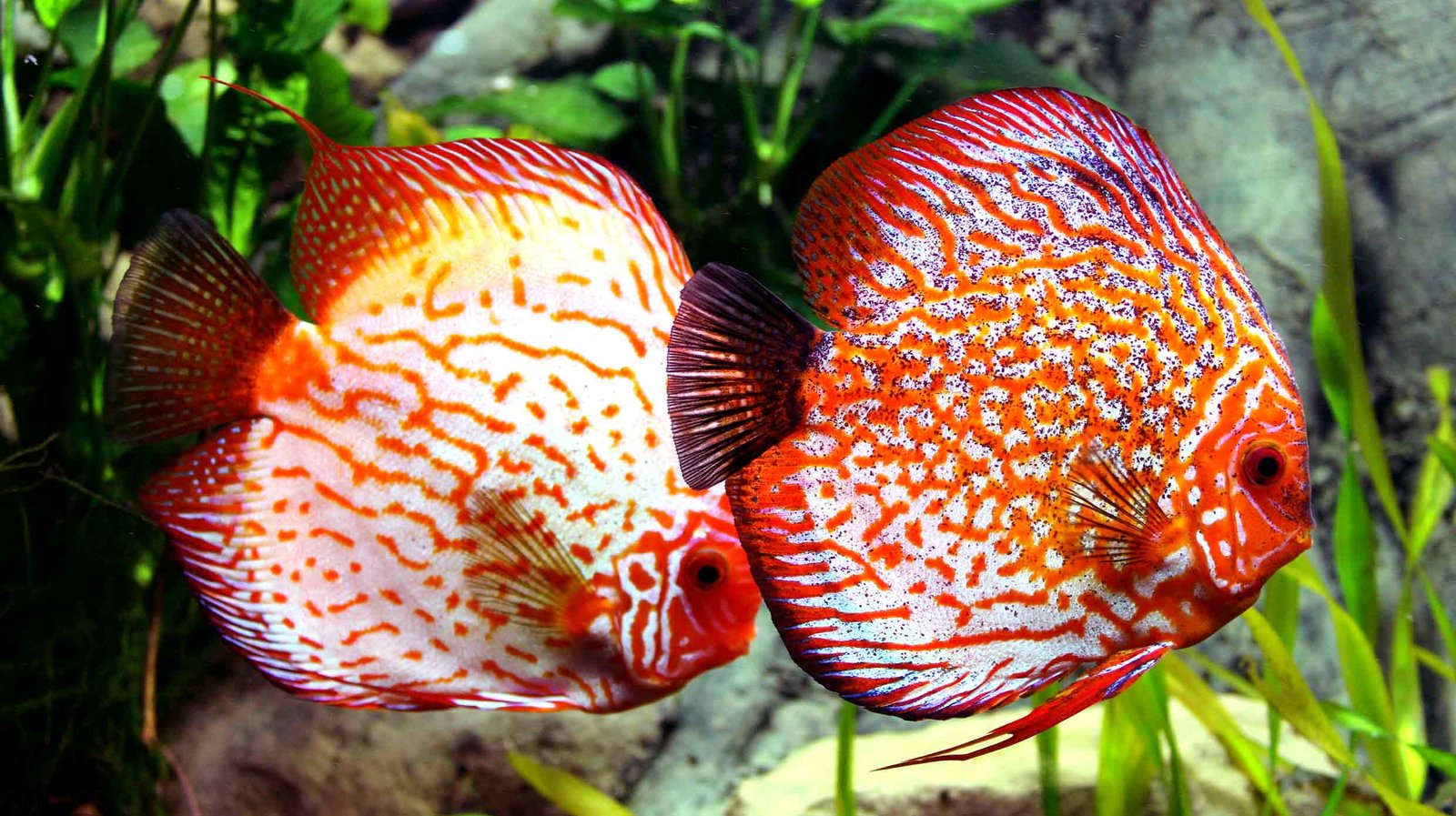
Discus Fish
Very sensitive to water quality
Discus are very sensitive to water quality and can become ill with even minor changes.
They need to maintain a water temperature between 28-30°C (82-86°F), which is difficult for beginners to control.
The water pH level needs to stay between 6.0 and 7.0, which can be hard for beginners to maintain.
Very susceptible to disease
Discus are highly susceptible to disease. They can get sick quickly due to minor changes in water quality or diet.
Diseases are difficult for beginners to diagnose and treat.
Special diet required
Discus has a specialized diet. They need high-protein foods, live foods (such as bloodworms and brine shrimp), and specially prepared to discuss food.
This type of diet can be challenging for beginners to manage.
3. Flowerhorn
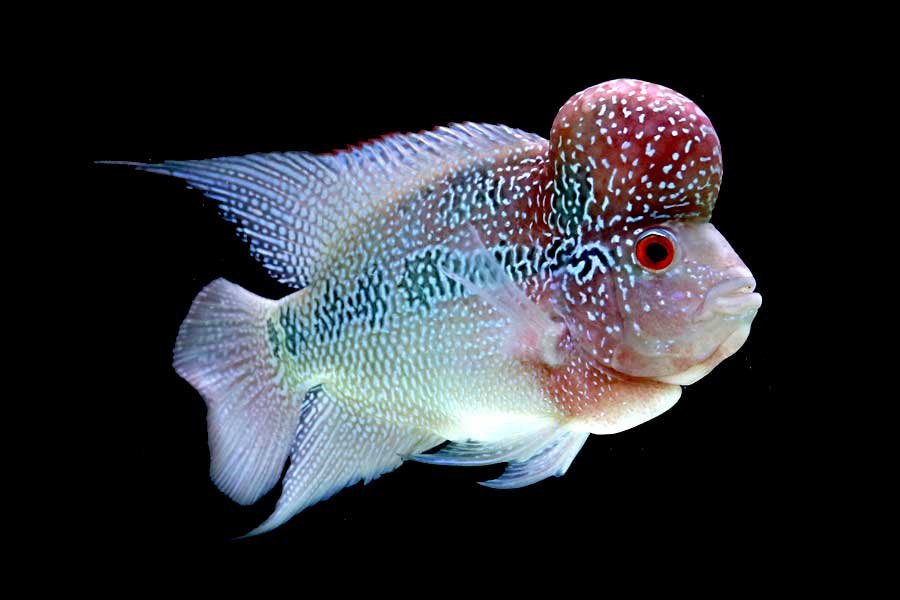
Flowerhorn
Aggressive nature
Flowerhorn fish are very aggressive and do not get along well with other fish. They may attack other fish to defend their territory, which can be problematic for beginners.
Large size
Flowerhorn fish grow to around 12-16 inches. They require a large tank (at least 70-80 gallons), which can be expensive and difficult for beginners to manage.
Special care needs
Maintaining good water quality and providing a special diet is essential to keep them healthy. This type of care can be challenging for beginners.
Tank environment
Proper filtration, water temperature, and water quality are important for flowerhorn fish. Controlling these can sometimes be tricky for beginners.
4. piranha

Piranha
Aggressive nature
Piranhas are generally aggressive and predatory in nature. They may clash with other fish, or even with piranhas of the same species. This can cause problems for beginners, especially if kept with other fish.
Risky behavior
Piranhas can be aggressive if not fed or when under stress, and they may even attack human hands or fingers. Handling such fish requires special experience.
Special water quality
Piranhas require proper control of water, temperature, and pH levels. Clean, filtered water is important for their health, which requires regular maintenance.


